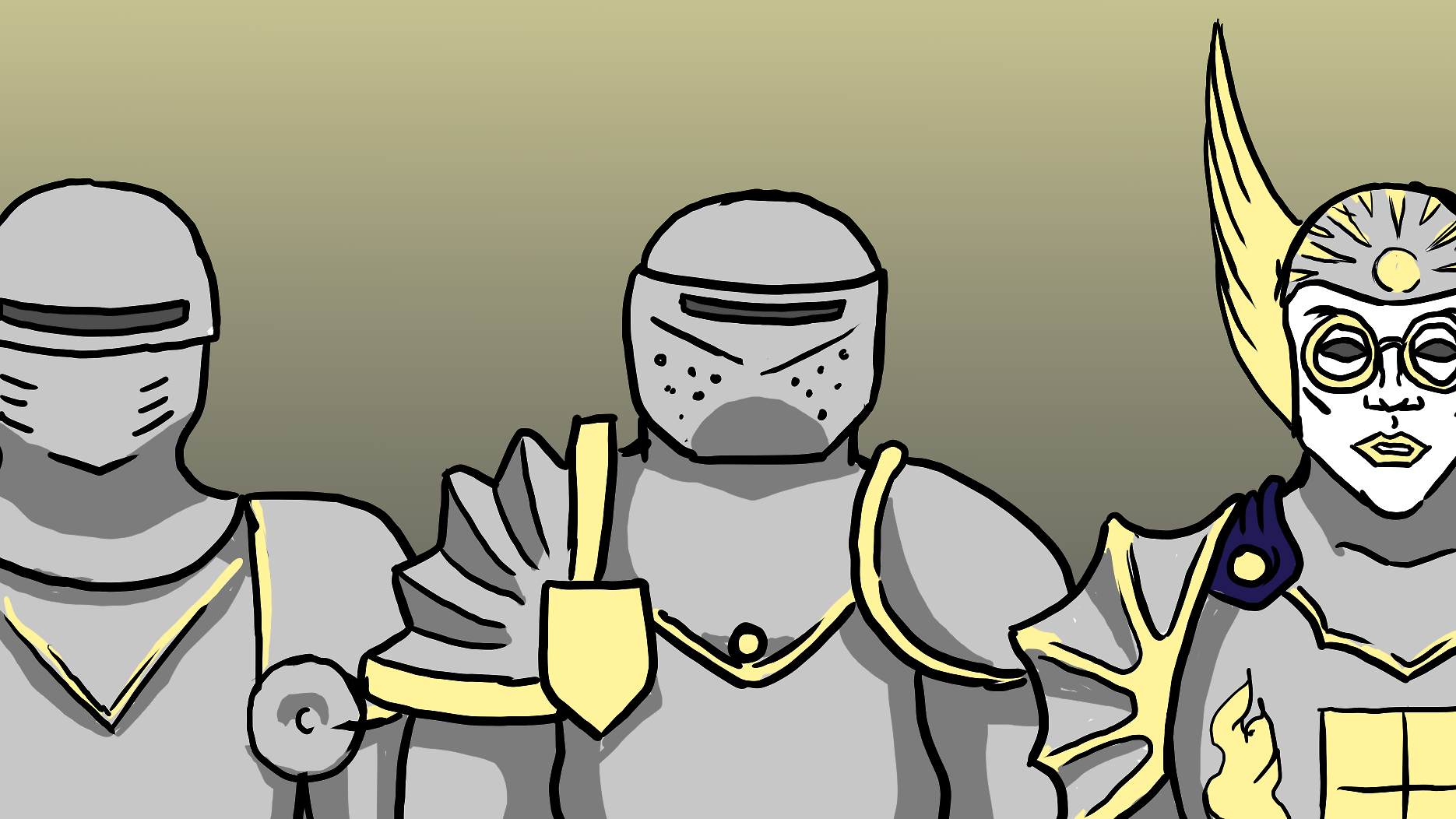Asymmetrical Armour
I have a slightly random question. Yall know stuff about armor, right? What's the benefit of having a pauldron on only one side, or having one be larger than the other? It appears so frequently in designs that it makes me think it must be a real thing, but I can't come up with a reason.
The short answer is: Shields and small weapons (and sometimes sports).
The longer answer is that one of the most effective pieces of armour used throughout history in various forms is the shield, and part of why it was so effective in early eras was that you could hide behind a shield and poke the enemy with your spear.
However, as war evolved and armour became more sophisticated, spears became ineffective and warriors needed to switch to shorter, harder hitting weapons such as maces, axes, hammers, picks, pointy swords, etc.
The problem with these weapons is that in order to have a haft short enough to give you the necessary speed and control you hurt your armoured opponent - you have to swing your arm out from behind protecting of a shield. Generally speaking the shield also gets smaller since you need to use it to counter balance your swings with your weapon.
So you reach a situation where your oft side doesn’t need as much heavy and expensive armour (due to being protected by the shield) but your dominant arm needs additional protection from the shoulder to the hand.
Warriors who used two handed weapons such as greatswords, halberds, etc needed equal protection on both arms (and armpits) - so they tend to have a lot of plating for both arms.
This is particularly true since the large shield + spear combination was usually paired with tight linked formations so soldiers would protect each other (Romans even had a system for swapping out ranks). Soldiers swinging weapons can’t bunch up as tightly so need to protect their striking arm.
The other two common sources (that I’m aware of) are the combat sports - gladiators and jousting.
Gladiators had deliberately impractical armours and set combinations of gear designed to create dramatic fights. Some of this included protecting their arms so they could fight more aggressively and have a better chance at drawing blood or creating dramatic scenarios.
Jousting was a unique sport in that the armour was originally combat armour but as it became more and more specialised as time went on and plate armour fell out of use for combat.
Give that the sport demanded that your opponent use a singular weapon, and was expected to aim more or less in a particular area meant that it made sense to put up the majority of protecting being put in one place:
In these cases, it’s important to remember that specialised armour like this is somewhat like a sports car: a demonstration of wealth with no real practical purpose other than to play in a dangerous game. There was no expectation of it being used in an actual battle or using an unexpected weapon or strategy.
- wincenworks








